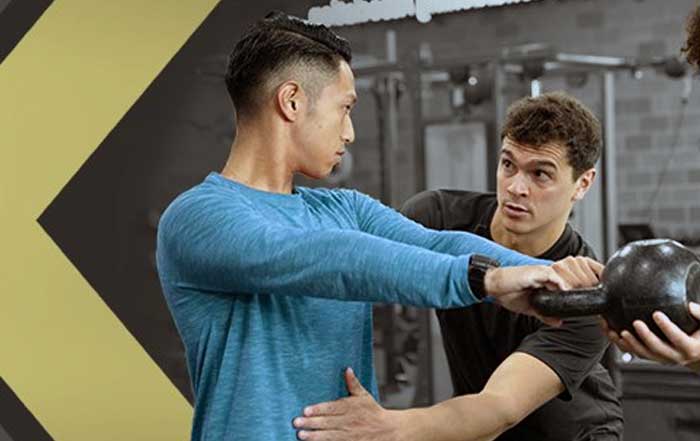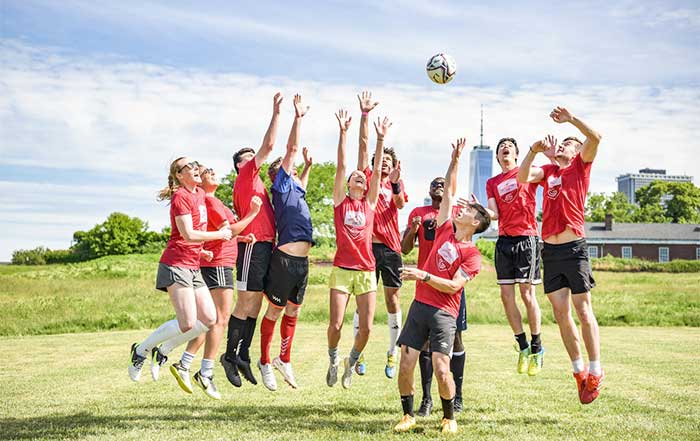Golf has always been a sport that merges tradition with innovation. From the early wooden clubs of the 15th century to the titanium alloys and carbon fiber composites of today, each era of golf has been defined by the tools players carry in their bags. As the game moves deeper into the 21st century, technology has become the defining factor shaping equipment. Golfers now benefit from clubs that are lighter, stronger, and more personalized than ever before, with innovations aimed at enhancing distance, accuracy, and consistency. Advancements in materials science, artificial intelligence, and data-driven design are revolutionizing the performance of drivers and clubs, reshaping not only professional golf but also how amateurs engage with the sport.
For readers of sportsyncr.com, understanding these breakthroughs offers insights into how the intersection of sports, business, technology, and culture continues to evolve. Golf is not just about leisure and competition; it reflects global trends in innovation, sustainability, and consumer demand for high-performance products that balance tradition with cutting-edge science.
The Evolution of Golf Club Design
The earliest golf clubs, known as “cleeks” and “niblicks,” were hand-carved from hardwoods such as beech or ash. They were heavy, inconsistent, and prone to damage, yet they symbolized the sport’s artisanal roots. By the late 19th century, steel shafts replaced hickory, ushering in an era of more durable and standardized equipment. The introduction of titanium in the 1990s transformed driver design, reducing weight while maintaining strength and enabling larger clubheads with expanded sweet spots.
Today, golfers have access to drivers and irons engineered with aerospace-grade materials, sophisticated geometry, and computational fluid dynamics. Each club is the result of extensive testing in laboratories and wind tunnels, blending artistry with engineering precision. Companies like TaylorMade, Callaway, and Titleist have become synonymous with innovation, driving an arms race in golf technology.
As golf continues to grow globally—particularly in markets such as Asia and Europe—the demand for advanced equipment reflects not only performance ambitions but also broader consumer expectations of customization and sustainability. Readers can explore how these changes align with larger sporting trends in the sportsyncr.com/sports section.
Materials Science and Golf Clubs
Carbon Fiber Composites
One of the most transformative innovations in recent years is the use of carbon fiber in driver heads and iron components. Carbon fiber is significantly lighter than steel or titanium, allowing designers to redistribute weight to optimize launch angles and forgiveness. TaylorMade’s Stealth series, for instance, has pioneered carbon wood technology, which replaces traditional metal with carbon faces, producing a distinct feel and improved energy transfer at impact.
Titanium and Multi-Material Construction
Titanium remains a cornerstone of clubhead construction due to its remarkable strength-to-weight ratio. However, multi-material clubs now combine titanium with carbon composites and tungsten weighting systems. These combinations provide balance between power and control, helping both professionals and amateurs achieve greater consistency.
Nanotechnology in Shafts
Modern shafts are engineered with nanomaterials that enhance stability while reducing vibrations. This advancement not only improves ball speed but also reduces strain on the golfer’s body, making the sport more accessible to older players or those with injuries. Such developments resonate with the broader wellness and health trends featured on sportsyncr.com/health.
Artificial Intelligence and Data-Driven Design
The integration of artificial intelligence (AI) has marked a new era in golf club design. Companies like Callaway employ AI algorithms to simulate thousands of potential face designs for their drivers. By processing vast amounts of performance data, AI optimizes variable face thickness, ensuring that off-center hits retain ball speed and distance.
This process accelerates innovation cycles, allowing brands to test configurations virtually before producing physical prototypes. Golfers benefit from clubs that are engineered not just for averages but for real-world variability. The influence of AI extends beyond performance; it also supports personalization, tailoring clubs to match swing speeds, angles of attack, and player preferences.
The role of AI in sports equipment echoes broader technological adoption in industries ranging from fitness to finance. Readers can further explore parallels with technology-driven change in sportsyncr.com/technology.
Adjustable Drivers and Custom Fitting
Golf has always been a game of precision, where small adjustments can translate into significant performance differences. Adjustable drivers now allow players to fine-tune loft, lie angle, and weight distribution with a simple twist of a wrench. These innovations give golfers unprecedented control over ball flight, accommodating personal preferences, course conditions, and even weather variables.
Beyond the club itself, custom fitting has become integral to the modern golf experience. Using motion-capture systems and launch monitors such as TrackMan or Foresight Sports, players receive data on spin rates, launch trajectories, and swing paths. Club manufacturers and retailers then design equipment that maximizes individual performance, democratizing access to tour-level precision.
Such personalization reflects broader consumer trends where buyers expect tailored experiences in everything from fitness apps to luxury products. This resonates with the global shift toward customization highlighted in sportsyncr.com/business.
Sustainability and Eco-Friendly Golf Equipment
Sustainability is now a critical factor influencing product development across industries, and golf is no exception. Manufacturers are increasingly experimenting with recycled materials, sustainable production methods, and circular economy principles. Wilson Sporting Goods and Cobra Golf have tested eco-friendly club grips and packaging, while high-end brands explore biodegradable materials for accessories.
As the sport seeks to reduce its environmental footprint, these innovations address consumer demand for greener products without sacrificing performance. Eco-conscious design also aligns with broader cultural and environmental concerns, making the topic relevant for readers of sportsyncr.com/environment.
The Role of Smart Technology in Golf
Digital integration is redefining how golfers interact with their equipment. Smart grips and embedded sensors now track swing metrics, providing real-time feedback directly to a smartphone app. Companies like Arccos Golf and Shot Scope offer systems that not only record performance data but also suggest strategic adjustments, turning every round into an opportunity for learning.
Smart clubs extend beyond performance analysis. Some experimental prototypes include haptic feedback, guiding players toward better swing mechanics. These tools are particularly valuable for beginners and recreational players, bridging the gap between self-learning and professional coaching.
This evolution mirrors trends in the broader fitness and wearable technology industry, an area consistently covered at sportsyncr.com/fitness.
Global Market and Consumer Trends
By 2025, the global golf equipment market is valued at more than $15 billion, with drivers and irons representing a significant share. Growth is particularly strong in Asia, where rising middle-class participation in sports like golf is fueling demand for advanced equipment. Countries such as Japan, South Korea, and Thailand have become hubs for innovation, both in terms of consumer adoption and manufacturing excellence.
In Europe and North America, consumers continue to prioritize performance and personalization, while younger generations show increasing interest in sustainability and smart technology integration. The convergence of these demands has reshaped brand strategies, leading to collaborations between golf companies and tech firms.
For global readers, exploring these dynamics provides insights into how sport and commerce intersect. Related coverage can be found on sportsyncr.com/world and sportsyncr.com/news.
The Competitive Landscape of Golf Equipment Companies
The global golf industry has become a highly competitive environment where innovation is not just an advantage but a necessity. Leading companies such as TaylorMade, Callaway, Titleist, Ping, and Cobra dominate the market, each investing heavily in research and development to capture the attention of professionals and recreational golfers alike. These brands leverage cutting-edge materials, proprietary designs, and marketing campaigns centered on professional endorsements to maintain their status at the forefront of the sport.
TaylorMade has earned a reputation for pushing boundaries, particularly with its carbon wood technology, which has reshaped perceptions of what is possible in driver design. Callaway, on the other hand, has positioned itself as a leader in artificial intelligence applications, boasting a series of AI-designed clubfaces that have been widely adopted on the professional tour. Titleist, long associated with precision and consistency, continues to appeal to traditionalists while quietly integrating advanced technology to stay relevant in a rapidly evolving market.
Meanwhile, newer competitors are emerging, particularly from Asia, where manufacturers are blending affordability with technological sophistication. Companies in Japan and South Korea are carving out market share by appealing to younger golfers who demand high performance at more accessible price points. The diversity of innovation across regions underscores golf’s globalization, a theme central to sportsyncr.com/world.
Evolution of Golf Technology
From wooden clubs to AI-driven innovation
Sponsorship, Endorsements, and Brand Visibility
Professional golfers wield immense influence over consumer behavior, and equipment sponsorships play a pivotal role in shaping market dynamics. When a top player wins a tournament with a particular driver, sales for that model often surge. For example, Rory McIlroy’s long-standing association with TaylorMade or Phil Mickelson’s endorsements of Callaway equipment have proven that visibility on global stages translates directly into commercial success.
Endorsement deals also fuel the marketing strategies of major golf brands, as companies align themselves with players who embody innovation, consistency, and excellence. These partnerships extend beyond equipment, often including apparel and accessories, creating holistic brand ecosystems. Consumers are drawn not only to the technological advantages of a club but also to the prestige and narrative that come with it.
The significance of sponsorships also extends into grassroots programs, where equipment manufacturers partner with junior leagues and golf academies. By fostering early brand loyalty, companies ensure long-term engagement and market presence. This reflects the broader role of sponsorship in global sports industries, covered extensively at sportsyncr.com/sponsorship.
The Intersection of Golf and Culture
Golf has historically carried connotations of exclusivity, tradition, and elitism. However, the integration of technology into equipment is reshaping its cultural image, making the game more accessible and appealing to broader demographics. Younger generations, influenced by digital culture and wearable technology, view modern golf as an intersection of athleticism, science, and lifestyle.
Smart clubs, real-time data tracking, and virtual coaching platforms have democratized golf knowledge, bridging the gap between amateurs and professionals. This cultural shift is particularly relevant in regions where golf was once considered inaccessible. In countries like South Korea and China, the sport has gained a youthful following, partly due to its technological evolution.
Moreover, golf simulators—powered by advanced club-tracking systems—are transforming urban golf culture. In cities where courses are scarce, simulators provide realistic practice experiences, expanding golf’s reach to new audiences. This cultural integration highlights the way sports intersect with broader lifestyle trends, a theme consistently explored at sportsyncr.com/culture.
Professional Golf and the Influence of Equipment
The careers of professional golfers are often shaped by the equipment they use. On the PGA Tour and European Tour, the difference between victory and defeat can come down to subtle adjustments in driver settings or shaft flexibility. For elite players, technological innovation is not merely a matter of convenience but a necessity to remain competitive in a field where margins of error are razor-thin.
Players work closely with brand engineers to customize clubs tailored to their swings, creating a feedback loop between professional insights and consumer product development. When Bryson DeChambeau gained attention for his unconventional use of single-length irons, it sparked broader conversations about design possibilities and inspired new product lines. Such examples illustrate how professionals influence innovation trajectories and consumer adoption.
This collaboration also underscores the increasing reliance on sports science in professional competition. Detailed analytics provided by club sensors and launch monitors help athletes refine mechanics, reduce inconsistencies, and extend careers. These dynamics reflect the fusion of science and sport often discussed at sportsyncr.com/science.
The Role of Technology in Amateur Golf
While professional golfers enjoy access to elite customization, amateurs are benefiting from a trickle-down effect of innovation. Club manufacturers recognize that recreational players form the largest consumer base, and their needs often differ from those of tour professionals. Forgiveness, ease of use, and affordability drive much of the innovation aimed at amateurs.
Game-improvement irons, for instance, are engineered with wider soles, cavity backs, and optimized weight distribution to assist golfers with inconsistent swings. Adjustable drivers allow weekend players to tailor equipment without requiring extensive technical knowledge. Furthermore, smart grips and mobile integration provide data-driven feedback, enabling amateurs to track progress over time.
These advancements are reducing the intimidation barrier historically associated with golf, encouraging new players to take up the sport. With growth in participation comes growth in the equipment industry, reinforcing the symbiotic relationship between innovation and accessibility. Readers interested in the fitness and participation aspect of golf can explore more at sportsyncr.com/fitness.
Economic Impact of Innovation in Golf
The business of golf equipment extends far beyond club design. It drives a vast ecosystem that includes retail, sponsorships, tourism, and even employment opportunities in engineering, marketing, and sales. By 2025, the golf equipment market is projected to continue steady growth, buoyed by rising participation rates worldwide and increasing interest in premium, technologically advanced products.
In the United States, golf remains a multibillion-dollar industry that supports jobs at every level, from manufacturing facilities to local pro shops. In Asia, particularly in Japan, South Korea, and China, the demand for advanced clubs has created a competitive marketplace where domestic brands are emerging alongside global leaders. Europe remains a stronghold for traditional brands, though sustainability and customization are shaping consumer expectations.
The global economy of golf also intersects with other industries such as technology, manufacturing, and even environmental design. As companies innovate, they not only impact sports culture but also influence broader business practices and employment trends, as covered in sportsyncr.com/jobs.
The Future Trajectory of Golf Technology
Golf has firmly positioned itself as a sport that not only honors its heritage but also embraces advanced technological integration. The future of golf drivers and clubs is being shaped by three major forces: sustainability in manufacturing, AI-driven personalization, and the expansion of immersive digital technologies. Together, these innovations are redefining how players of all levels experience the game, ensuring golf remains relevant in a rapidly evolving global sports landscape.
Sustainability and Responsible Manufacturing
Sustainability is no longer an optional pursuit; it has become a mandate for sports industries worldwide. In golf, equipment manufacturers are taking significant strides toward eco-friendly practices. This includes reducing reliance on non-renewable materials, incorporating recycled metals, and adopting carbon-neutral production processes. Some brands are even experimenting with bio-based polymers and biodegradable packaging, addressing the full lifecycle of their products.
The demand for sustainability is not just a reflection of corporate responsibility but also of consumer expectations. Younger golfers, particularly in Europe and North America, increasingly favor brands that demonstrate environmental stewardship. Golf courses themselves are adopting sustainable practices in turf management and water conservation, aligning with the eco-conscious direction of the equipment industry. Readers can explore more about how sustainability shapes modern sports culture at sportsyncr.com/environment.
AI-Driven Personalization
Artificial intelligence has already revolutionized club design, but its potential extends far beyond manufacturing. In the near future, golfers may experience AI-driven club fitting that adapts in real time. Imagine a driver equipped with smart sensors that not only analyze a swing but also make micro-adjustments to optimize loft, weight distribution, and face angle mid-round. While experimental today, this vision of adaptive clubs could soon redefine performance standards.
Additionally, AI platforms are beginning to analyze long-term playing data, recommending equipment upgrades based on historical trends rather than isolated swing sessions. This personalized evolution of equipment ensures that golfers remain consistently matched to tools that maximize their potential. Such technological advancements align closely with broader digital integration trends across industries, a recurring theme highlighted at sportsyncr.com/technology.
Virtual Reality and Gaming Integration
Another exciting frontier is the merging of golf with virtual and augmented reality. High-definition golf simulators, once reserved for elite training centers, are now widely accessible. Virtual reality platforms are enabling players to practice at iconic courses from home, while augmented reality overlays provide real-time swing feedback during physical play.
This technological crossover is expanding golf’s cultural reach, appealing particularly to younger audiences who engage with sports through digital platforms and gaming. The inclusion of golf in popular esports and VR environments demonstrates the sport’s ability to evolve with consumer behavior. The future of golf will likely be a hybrid of traditional outdoor play and digital experiences, reflecting the growing convergence of sports and entertainment covered at sportsyncr.com/gaming.
Global Participation and Accessibility
Technology is not only redefining equipment but also shaping accessibility and inclusivity within golf. As clubs become more forgiving and adjustable, they open doors for new players to enjoy the sport without the steep learning curve that once discouraged participation. In addition, affordable smart devices provide coaching feedback without requiring professional lessons, making golf more approachable for those in emerging markets.
Expanding Markets in Asia and Beyond
The growth of golf in Asia, particularly in countries like China, South Korea, and Thailand, reflects how technology makes the sport more aspirational and attainable. Indoor golf simulators and advanced training centers are especially popular in dense urban areas, creating new pathways for participation where land scarcity limits traditional course construction.
In Africa and South America, golf is also beginning to grow as local economies strengthen and international brands recognize untapped markets. By offering accessible equipment tailored to regional needs, manufacturers are ensuring that golf evolves as a truly global sport. Readers can follow more global developments in participation trends at sportsyncr.com/world.
Shaping Golf as a Lifestyle Sport
Golf’s identity has shifted from being solely a competitive sport to becoming part of a broader lifestyle movement. Modern golfers often approach the sport as a form of physical fitness, mental wellness, and cultural engagement. Advances in equipment, which make the game more enjoyable and less frustrating, reinforce this perception.
The rise of eco-conscious products, smart tracking systems, and immersive virtual play aligns golf with contemporary lifestyle values. Younger generations view golf as an activity that can be enjoyed both socially and athletically, integrated with wellness practices and technology-driven living. Readers interested in this broader perspective can explore how golf intersects with fitness and health at sportsyncr.com/health and sportsyncr.com/fitness.
The Future Role of Professional Tours
Professional tours such as the PGA Tour, European Tour, and LPGA Tour are instrumental in showcasing innovation to global audiences. These tours act as real-world testing grounds where new technologies prove their worth under the most demanding conditions. The adoption of carbon fiber drivers, AI-engineered faces, and smart analytics by elite players validates their credibility and accelerates consumer adoption.
Furthermore, professional golf organizations are increasingly engaging with technology companies to enhance fan experiences. Innovations such as real-time club tracking, broadcast integrations, and player data overlays are turning golf into a more interactive and engaging spectacle. These efforts not only boost brand exposure but also elevate the cultural relevance of golf in a highly competitive sports entertainment landscape.
Business Implications of Innovation
For equipment manufacturers, innovation represents both opportunity and risk. The financial investment required for research and development is substantial, and only companies with robust business models can sustain this level of competition. However, those that succeed reap immense rewards in terms of brand loyalty and market dominance.
From a business perspective, innovation in golf equipment is not merely about performance but also about storytelling. Consumers are drawn to narratives of science, precision, and sustainability, and companies that effectively communicate these values often see stronger sales. For example, TaylorMade’s emphasis on carbon wood technology is as much a marketing story as it is an engineering achievement.
Innovation also influences the secondary golf economy, including retail distribution, digital marketing, and employment opportunities. Readers interested in these dynamics can explore related coverage at sportsyncr.com/business and sportsyncr.com/brands.
Emerging Technologies Beyond 2025
Looking toward the next decade, the golf equipment industry is expected to enter a new frontier where science, digital technology, and sustainability converge to redefine both performance and perception. Emerging technologies will likely create clubs that are not only smarter and more efficient but also more environmentally responsible and globally inclusive.
Biomechanics and Human-Centric Engineering
Future clubs will increasingly be designed with biomechanics at the forefront. Research into human movement and muscle engagement will allow engineers to create shafts, grips, and heads that reduce stress on joints while optimizing power transfer. Lightweight alloys and advanced polymers will play a role in minimizing injuries associated with repetitive swings, ensuring that players of all ages can enjoy the sport.
The integration of ergonomic design will also be pivotal for making golf more accessible to older demographics and players with disabilities. Adaptive equipment, tailored to individual mobility needs, is expected to expand inclusivity in the game. This shift resonates with the broader focus on wellness and accessibility, topics highlighted at sportsyncr.com/health.
3D Printing and Custom Manufacturing
The use of 3D printing in golf equipment is on the rise, enabling manufacturers to produce clubs with highly complex geometries that would be impossible with traditional methods. This approach allows for bespoke customization, where every club can be uniquely engineered for an individual golfer’s swing dynamics.
3D printing also enhances sustainability by reducing waste in the production process and allowing localized manufacturing, which cuts transportation emissions. As this technology matures, golfers may even have access to in-store or on-demand production of clubs, further personalizing the consumer experience.
Integration with Wearable Technology
Golf equipment will continue to merge with wearable devices, creating an ecosystem where clubs, smartwatches, and fitness trackers communicate seamlessly. Imagine a system where a driver not only measures launch angles but also synchronizes with a golfer’s heart rate and body posture, providing comprehensive insights into both performance and health.
This holistic approach connects golf with the broader wellness movement, appealing to a new generation of players who see sports as an extension of lifestyle and personal health. Readers can explore this intersection of technology and fitness further at sportsyncr.com/fitness.
Golf’s Alignment with Global Sustainability Goals
As climate change and environmental challenges become central concerns for all industries, golf is under increasing pressure to align with global sustainability goals. Courses, tournaments, and equipment manufacturers are adopting eco-conscious practices to ensure that the sport contributes to solutions rather than problems.
Sustainable Sourcing of Materials
Future clubs are likely to rely on responsibly sourced metals, recycled composites, and renewable materials. Companies that can provide full transparency of their supply chains will gain competitive advantages, as consumers demand not only performance but also ethical responsibility.
Circular Economy and Product Lifecycles
A circular economy model, where clubs can be recycled, refurbished, or repurposed at the end of their lifecycle, is emerging as a realistic pathway. Some brands are already experimenting with trade-in programs and recycling initiatives that reduce waste and encourage brand loyalty.
Green Innovation in Golf Culture
Beyond equipment, golf culture itself is being reshaped by sustainability. Courses are investing in eco-friendly irrigation systems, renewable energy, and carbon sequestration projects. These efforts connect directly with the eco-conscious direction of golf equipment and align with themes explored at sportsyncr.com/environment.
The Role of Innovation in Shaping Golf’s Cultural Future
Innovation in golf drivers and clubs is about more than technology; it is about redefining the cultural relevance of the sport in the modern world. Golf has long been perceived as traditional and exclusive, but its embrace of technology is breaking down barriers and creating new narratives.
Engaging Younger Generations
For younger players, golf is becoming an appealing blend of athletic performance and digital engagement. With smart clubs, gamified simulators, and social media-driven brand strategies, golf now competes not only with traditional sports but also with lifestyle activities that blend technology and culture. Coverage of these dynamics can be found at sportsyncr.com/social.
Elevating Global Appeal
Technological innovations are making golf more accessible in markets where it was once considered too expensive or elitist. Indoor simulators, affordable entry-level clubs, and smart training aids are enabling more people to experience golf without requiring traditional course access. This democratization of the sport supports its expansion across Asia, Africa, and South America, aligning with broader global sports trends covered at sportsyncr.com/sports.
Integration with Other Industries
The blending of golf with industries such as gaming, wellness, and business networking reflects its evolution into a multifaceted cultural activity. Golf is no longer confined to the course; it now extends into digital platforms, fitness programs, and global business strategies, making it a sport uniquely aligned with modern cultural and economic realities.
Conclusion
Golf drivers and clubs represent a perfect fusion of tradition and technological advancement. From carbon fiber composites and AI-designed faces to smart grips and sustainable manufacturing, innovations are shaping the game in ways that were once unimaginable. These developments not only enhance performance for professionals and amateurs but also redefine the cultural and environmental relevance of golf worldwide.
As golf continues to evolve, it reflects broader global trends: the demand for personalization, the pursuit of sustainability, and the integration of digital technologies into everyday life. For players, manufacturers, and fans alike, the future of golf promises to be a dynamic blend of science, culture, and lifestyle.








